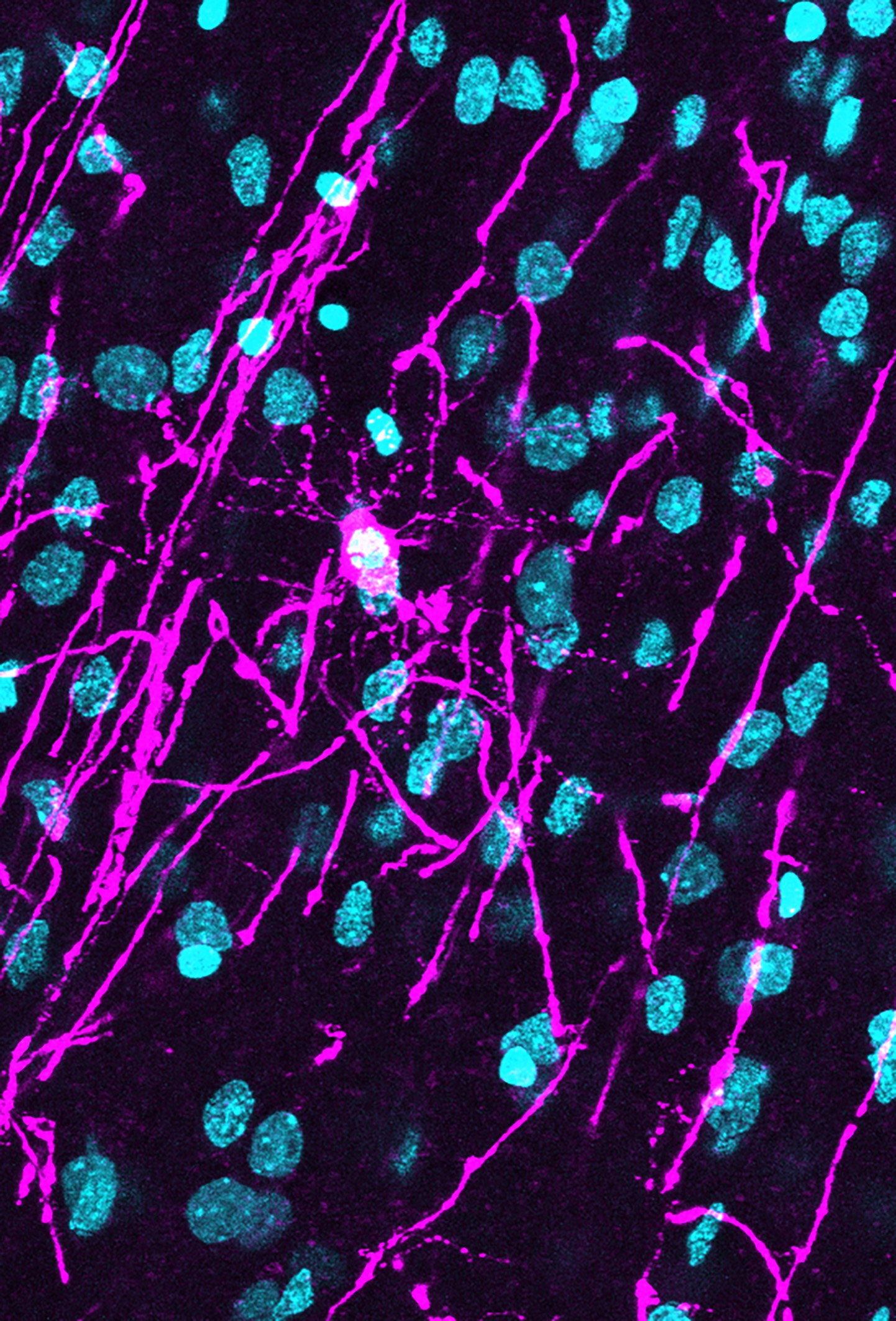Personal profile

- 2021 - present: Chancellor’s Fellow, Centre for Discovery Brain Sciences, University of Edinburgh, UK
- 2015 - 2021: Postdoctoral Fellow, University of Edinburgh, UK
- 2013 - 2015: Postdoctoral Fellow, University of Crete & IMBB-FORTH, Greece
- 2007 - 2013: PhD in Molecular Biology-Biomedicine, University of Crete & IMBB-FORTH, Greece
- 2005 - 2007: MSc in Molecular Biology-Biomedicine, University of Crete & IMBB-FORTH, Greece
- 2000 - 2005: Degree in Biochemistry & Biotechnology, University of Thessaly, Greece
Research Theme
| Genes and Development |
Research
We are investigating how myelination affects network function in health and in neurodevelopmental disorders.

Myelination, the formation of multi-layered membrane sheaths around axons is critical for neuronal health and fast signal transmission. In the central nervous system, myelin is produced by glia cells called oligodendrocytes. Each oligodendrocyte extends multiple processes that wrap around different axons, providing electrical insulation and metabolic support.
In the cortex, a significant proportion of myelination is attributed to cortical interneurons. My recent work showed that in the human and mouse adult brain, myelin is critical for interneuron survival and function.
The lab aims to discover:
- The mechanisms that regulate interneuron myelination during normal brain development
- The impact of interneuron myelination on network performance
- The contribution of cortical myelin in the dysregulation of neuronal networks in pre-clinical models of neurodevelopmental disorders
Our goal is to explore the communication between neurons and oligodendrocytes during brain development, with the hope to reveal new strategies for cellular and functional recovery in neurodevelopmental disorders.
Publications
1. Selective vulnerability of inhibitory networks in multiple sclerosis. Lida Zoupi, Sam A. Booker, Dimitri Eigel, Carsten Werner, Peter C. Kind, Tara L. Spires-Jones, Ben Newland and Anna C. Williams. (Acta Neuropathol 141, 415–429 (2021). https://doi.org/10.1007/s00401-020-02258-z)
2. New oligodendrocytes exhibit more abundant and accurate myelin regeneration than those that survive demyelination. Sarah A Neely, Jill M Williamson, Anna Klingseisen, Lida Zoupi, Jason J Early, Anna Williams, David A Lyons (2020 May: bioRxiv; doi: https://doi.org/10.1101/2020.05.22.110551)
3. Cryogel scaffolds for delivery of lysophosphatidylcholine to central nervous system slice culture: a model of focal demyelination for multiple sclerosis research. Dimitri Eigel*; Lida Zoupi*; Sowmya Sekizar*; Petra B Welzel; Carsten Werner; Anna Williams; Ben Newland (2019 Oct; Acta Biomaterialia, 97, 216-229 doi: 10.1016/j.actbio.2019.08.030 *equal contribution)
4. Alkyne-tagged PLGA allows direct visualization of nanoparticles in vitro and ex vivo by stimulated Raman scattering microscopy. Sally Vanden-Hehir, Stefan Cairns, Martin Lee, Lida Zoupi, Michael P. Shaver, Valerie G. Brunton, Anna Williams and Alison N. Hulme (2019 Oct; Biomacromolecules 20 (10), 4008-4014 doi: 10.1021/acs.biomac.9b01092)
5. The Lysosomal Transcription Factor TFEB Represses Myelination Downstream of the Rag-Ragulator Complex. Ana M.Meireles*, Kimberle Shen*, Lida Zoupi, Harini Iyer, Ellen L.Bouchard,Anna Williams, William S.Talbot. Developmental Cell (2018 Nov; 47(3): 319-330.e5 doi: 10.1016/j.devcel.2018.10.003, *equal contribution)
6. The function of Contactin-2/TAG-1 in oligodendrocytes in health and demyelinating pathology. Lida Zoupi, Maria Savvaki, Katerina Kalemaki, Iias Kalafatakis, Kyriaki Sidiropoulou, Domna Karagogeos. GLIA (2018 Mar; 66(3):576-591. doi: 10.1002/glia.23266.)
7. Inhibitory axons are targeted in hippocampal cell culture by anti-Caspr2 autoantibodies associated with limbic encephalitis. Delphine Pinatel, Bruno Hivert, José Boucraut, Margaux Saint-Martin, Véronique Rogemond, Lida Zoupi, Domna Karagogeos, Jérôme Honnorat, Catherine Faivre-Sarrailh. Frontiers in Cellular Neuroscience (2015 Jul 9;9:265. doi: 10.3389/fncel.2015.00265)
8. Alterations of juxtaparanodal domains in two rodent models of CNS demyelination. Lida Zoupi., Markoullis, K., Kleopas A. Kleopa., Karagogeos, D. GLIA (2013 Aug;61(8):1236-49. doi: 10.1002/glia.22511)
9. Axons and myelinating glia: an intimate contact. Lida Zoupi., Savvaki M., Karagogeos D. IUBMB Life (2011 Sep; 63(9):730-5. doi: 10.1002/iub.513)
10. The expression of TAG-1 in glial cells is sufficient for the formation of the juxtaparanodal complex and the phenotypic rescue of Tag-1 homozygous mutants. Savvaki, M., Theodorakis, K., Lida Zoupi, Stamatakis, A., Tivodar, S., Kyriakou, K., Stylianopoulou, F., Karagogeos, D. The journal of Neuroscience, (2010 Oct; 30(42):13943–13954 doi: 10.1523/jneurosci.2574-10.2010)


